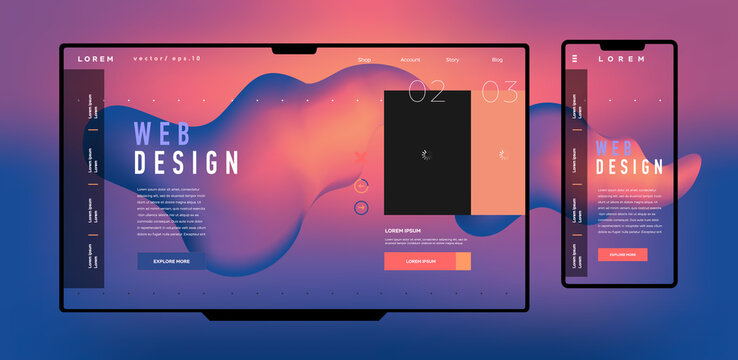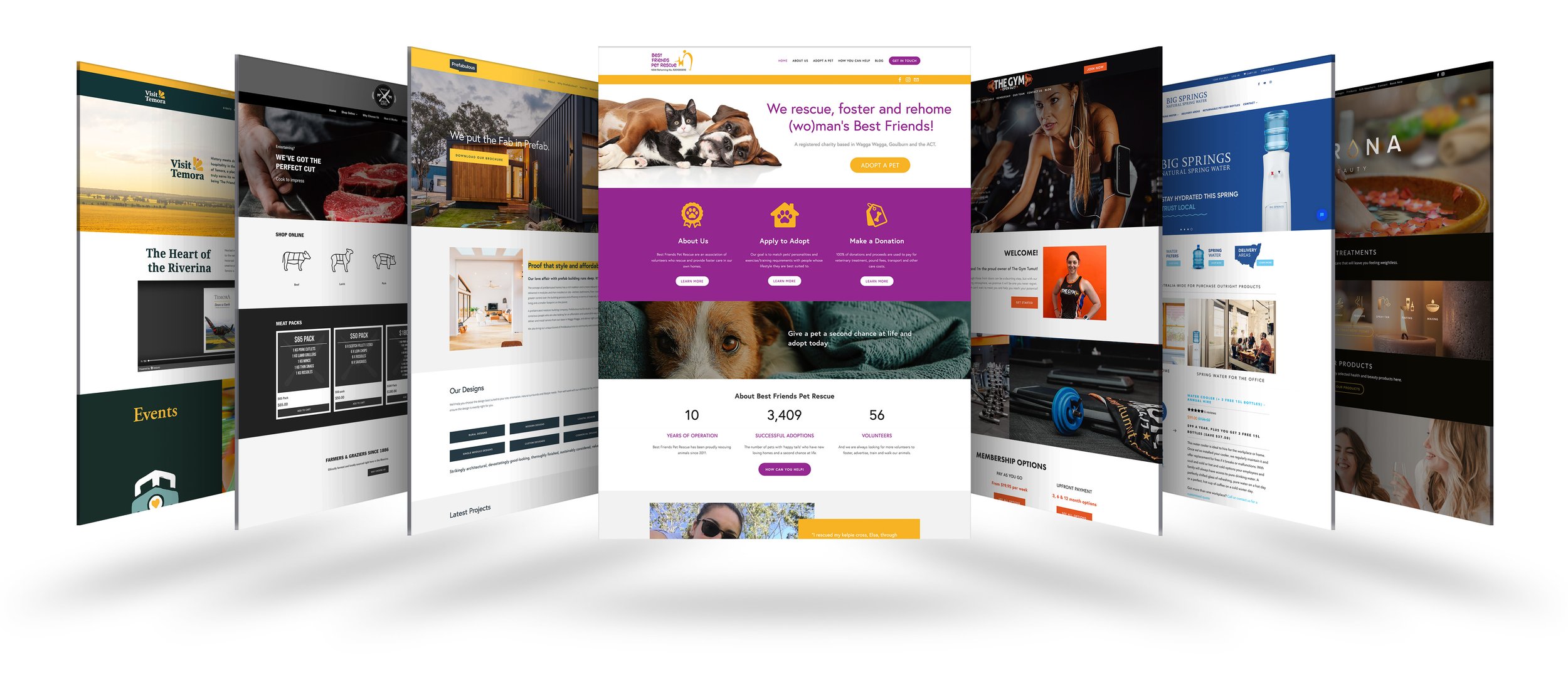Leading Tips for Creating an Impactful Internet Site Design That Converts
In today's digital landscape, the importance of an impactful website style can not be overstated, particularly when it involves transforming site visitors into customers. To achieve this, one should think about a range of aspects, including comprehending the target audience, prioritizing individual experience, and enhancing for mobile systems. The tactical use of compelling call-to-actions and a well-defined aesthetic power structure plays a critical duty in leading customers with their journey. As we explore these important elements, it becomes noticeable that the success of your internet site rests on greater than just aesthetic appeal; it needs a thoughtful approach to layout and capability.

Understand Your Target Market
Understanding your target market is essential to effective internet site style, as it prepares for developing an appealing user experience. Recognizing who your customers are, including their demographics, choices, and behaviors, makes it possible for designers to customize the site's content, design, and functionality to fulfill particular demands.
Carrying out thorough market research study is essential in this procedure. Surveys, meetings, and analytics can provide useful insights into customer expectations and discomfort points. By compiling this information, designers can produce customer personalities that stand for different sections of the target market, guaranteeing that layout decisions are notified and pertinent.
Furthermore, comprehending the target market helps in choosing ideal design aspects such as shade systems, typography, and imagery that resonate with customers. A website that speaks directly to its target market cultivates a sense of connection and depend on, urging longer visits and higher conversion rates.
Eventually, a user-centered technique to internet site design not only improves individual contentment but also supports company goals by driving involvement and commitment. By focusing on the demands and choices of the target audience, a website can efficiently serve its function and accomplish preferred results.
Prioritize Individual Experience
To improve the general efficiency of a web site, focusing on individual experience (UX) is necessary (Website Design). A properly designed UX ensures that site visitors can browse the website easily, locate details promptly, and involve with material meaningfully. This causes boosted individual fulfillment and higher conversion rates
Begin by implementing intuitive navigating. Menus needs to be practically structured, enabling individuals to locate key locations of the website with very little effort. Uniformity in layout aspects, such as color schemes and typefaces, promotes familiarity, which is essential for maintaining customer interaction.
Additionally, take into consideration the filling speed of your website. A hold-up of just a couple of secs can result in significant drop-offs, as individuals are less most likely to wait on a slow-loading page. Simplifying pictures and maximizing code can improve performance and preserve visitors.
By prioritizing individual experience, you not just develop a more pleasurable atmosphere for site visitors yet additionally strengthen your brand's trustworthiness. Inevitably, an emphasis on UX is a financial investment in the lasting success of your website.
Optimize for Mobile Gadgets
Enhancing my response for smart phones is critical in today's electronic landscape, where an increasing number of users access sites with smartphones and tablets. A mobile-friendly design not only enhances user experience but additionally plays a significant duty in boosting internet search engine positions. To attain this, it is vital to embrace a responsive style that automatically adapts to various display dimensions and positionings.

Packing speed is an additional essential aspect; mobile individuals are generally much less individual and expect rapid access to information. Maximize images and utilize web browser caching to improve efficiency. Lastly, examination your check my blog web site on multiple tools and screen resolutions to recognize and correct any kind of prospective usability problems. By focusing on mobile optimization, you ensure that your web site remains competitive and properly engages a more comprehensive audience.
Usage Compelling Call-to-Actions
A site's performance often rests on its capability to lead visitors toward desired actions, making engaging call-to-actions (CTAs) crucial components of design. CTAs function as the essential factors that route users to engage with the site, whether that implies buying, authorizing up for an e-newsletter, or downloading and install a source.
To create effective CTAs, clarity is critical. Use concise language that clearly interacts the activity you desire the individual to take. Expressions such as "Start," "Join Free," or "Shop Now" see this not only communicate seriousness however likewise get rid of uncertainty. The placement of CTAs is similarly essential; they ought to be tactically positioned throughout the website to ensure they are easily visible, especially in high-traffic areas.
In addition, the layout of CTAs must stick out without being meddlesome. Utilize contrasting colors and clear typefaces to guarantee they catch attention. Additionally, take into consideration making use of directional hints, such as arrows or photos, to lead individuals toward these switches. By concentrating on these aspects, businesses can significantly boost individual engagement, driving conversions and inevitably accomplishing their website's objectives.
Emphasis on Visual Pecking Order
Effective web site design depends greatly on a well-structured visual power structure that guides customers through web content perfectly. By arranging elements in a way that focuses on information, developers can boost individual experience and promote decision-making. This involves using dimension, color, contrast, and spacing purposefully to draw focus to the most vital parts of a webpage.
Making use of bigger fonts for headings and subheadings establishes a clear difference in between different sections, enabling customers to scan content effortlessly. In addition, employing contrasting colors for switches and calls-to-action can record user attention and motivate communication. Whitespace is an additional essential element; it stops mess and makes it possible for users to focus on essential messages without diversions.
Photos and graphics should complement the text while likewise adhering to the well established power structure, enhancing the total message (Website Design). Uniformity in layout elements, such as color design and typography, further strengthens the visual hierarchy, making navigation intuitive

Final Thought
In conclusion, reliable web site design demands a detailed understanding of the target audience, prioritization of user experience, and mobile optimization. Eventually, a well-executed site layout serves as a crucial part in driving individual activities and attaining service purposes.
Comments on “Easy-to-Navigate Website Design Services That Improve Performance and Functionality”